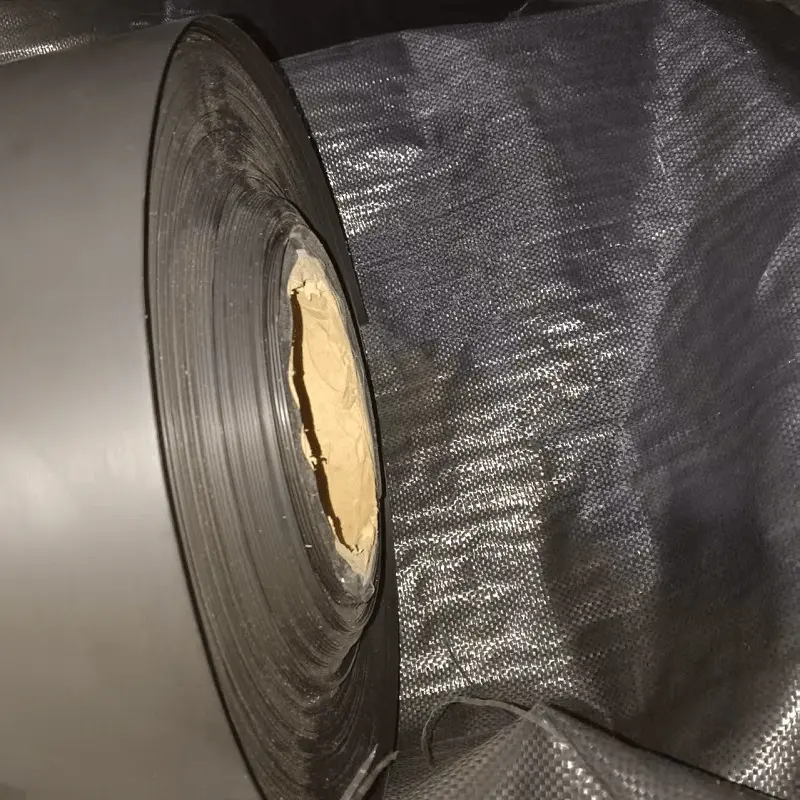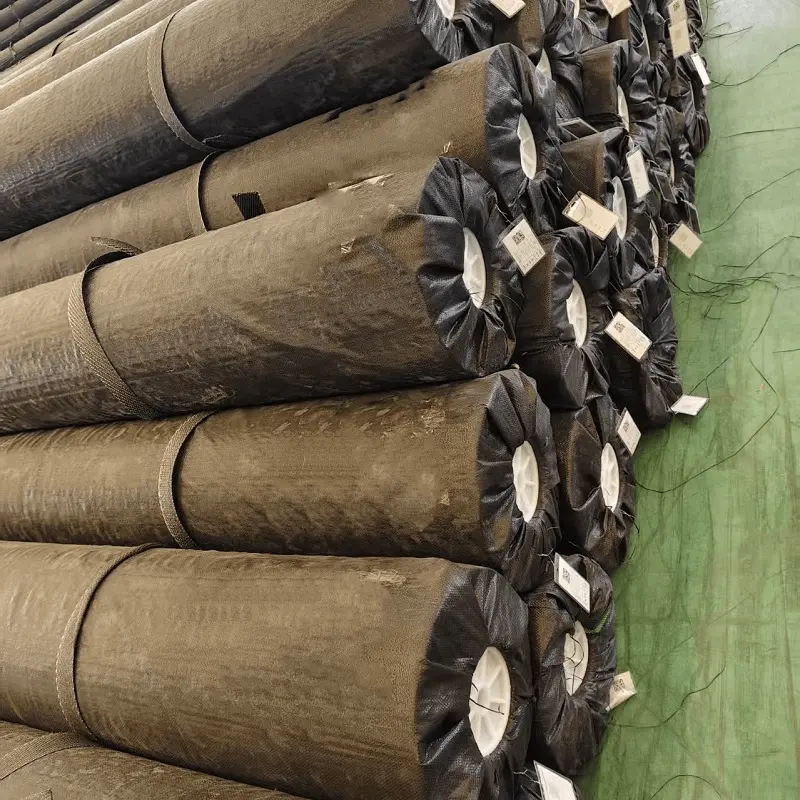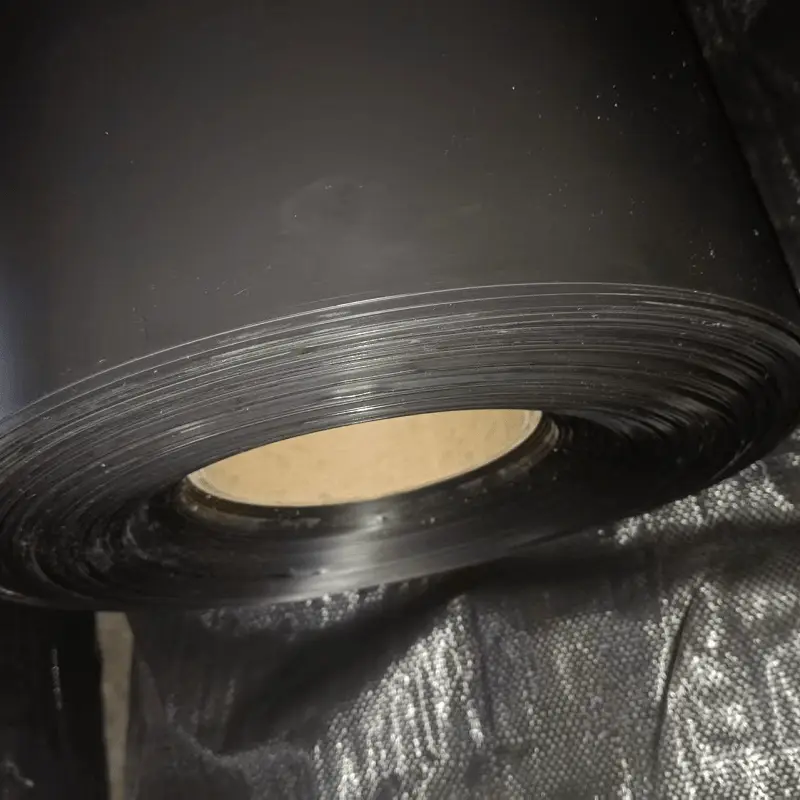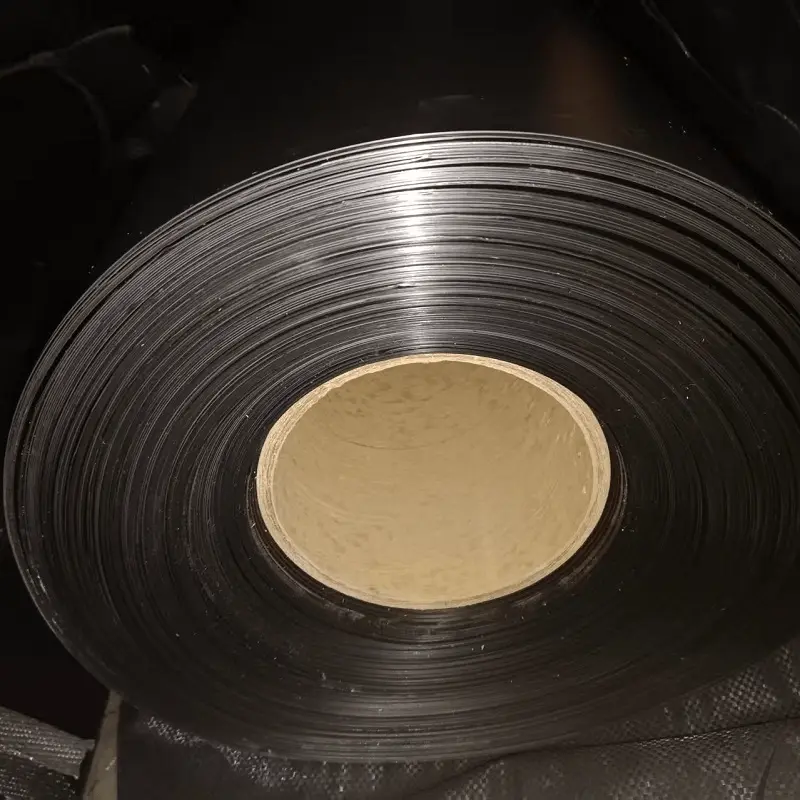Technical Advantages of HDPE Geomembranes
| Property | HDPE Geomembrane | Traditional Materials |
|---|---|---|
| Chemical Resistance | Resistant to pH 2-12 | Limited resistance to acids |
| Tensile Strength (kN/m) | 120-160 | 40-80 |
| UV Stability | 25+ years (with additives) | 3-5 years |
| Installation Flexibility | Cold-welded seams (-40°C to 80°C) | Temperature-sensitive adhesives |
| Permeability (m³/day) | <1×10⁻¹² | 1×10⁻⁸ to 1×10⁻⁶ |
Key Features:
Multi-Layer Structure: Co-extruded membranes with carbon black layer provide UV protection and anti-aging properties.
Seam Strength: Double-welded seams using automated equipment achieve 85% material strength vs. 60% for hand-welded alternatives.
Customizable Thickness: 0.5mm-3mm options cater to specific applications:
0.5-1.0mm: Temporary leachate ponds
1.5-2.0mm: Tailings storage facilities (TSFs)
2.5-3.0mm: Acidic wastewater containment
Applications in Kenyan Mining Operations
1. Tailings Management
Case Study: Kwale Mineral Sands Project (2023)
98% reduction in leachate migration
Compliance with EMCA 2015 standards
20% lower operational costs vs. clay liners
Challenge: Arsenic-rich tailings threatened groundwater
Solution: 1.5mm HDPE liner with geotextile underlayment

2. Heap Leaching Pads
Gold Extraction: HDPE membranes prevent seepage of cyanide solutions
Performance Metrics:
Evaporation Reduction: 35% through controlled permeability
Solution Recovery: >90% vs. 75% in unlined pads
Service Life: 15-20 years with proper maintenance
3. Acid Mine Drainage Control
Coal Mines: 2mm HDPE liners installed in drainage channels
Chemical Resistance: Withstands Fe³⁺ concentrations up to 20,000 mg/L
Environmental Impact: Reduced water treatment costs by 40% (2019-2024)
Economic Analysis
| Cost Component | HDPE System | Clay Liner | Concrete |
|---|---|---|---|
| Initial Investment ($/m²) | 8-12 | 6-8 | 25-35 |
| Maintenance ($/year) | 0.5-1.5 | 2-4 | 3-5 |
| Lifespan (years) | 20-30 | 10-15 | 15-25 |
| Total Cost (20 years) | 160-300 | 120-240 | 500-875 |
ROI Calculation:
For a 10,000m² TSF:
HDPE saves 575,000 over 20 years
Payback period: 3-5 years (considering environmental penalties avoidance)
Environmental Benefits
Carbon Footprint Reduction:
30% lower energy consumption in production vs. PVC alternatives
Recyclable at end-of-life (90% recovery rate)
Water Conservation:
Lined ponds reduce evaporation losses by 25-40%
Enables closed-loop water systems in processing plants
Biodiversity Protection:
Prevents heavy metal leaching into waterways
Reduces soil salinity impacts on surrounding ecosystems
Regulatory Compliance
Kenya's EMCA requires:
Leak detection systems every 1,000m²
Annual permeability testing (<1×10⁻⁹ cm/s)
Emergency spill response plans
HDPE systems integrate:
Geoelectric leak detection layers
Pressure-sensitive monitoring wells
Automated valve shutoff systems
Future Trends
Nanotechnology Integration:
Self-healing membranes using graphene additives
Smart geomembranes with embedded sensors
Circular Economy Models:
Post-consumer HDPE recycling programs
Lease-return schemes for mining operators
Climate Resilience:
Development of membranes for extreme temperatures (up to 100°C)
Enhanced resistance to seismic activity in Rift Valley regions
Conclusion
HDPE geomembranes represent a transformative technology for Kenya's mining sector, balancing economic growth with environmental stewardship. By adopting these solutions, operators can achieve:
95% compliance with international environmental standards
30-40% reduction in long-term liability costs
Enhanced corporate sustainability ratings
As Kenya transitions to a green economy, investments in HDPE containment systems will be pivotal in realizing the mining industry's potential while preserving natural resources for future generations. The technology's adaptability, coupled with ongoing innovations, positions it as the cornerstone of responsible mineral extraction in East Africa.
![]() 1.5 Double-sided smooth HDPE geomembrane.pdf
1.5 Double-sided smooth HDPE geomembrane.pdf



897.webp)
942.webp)
237.webp)